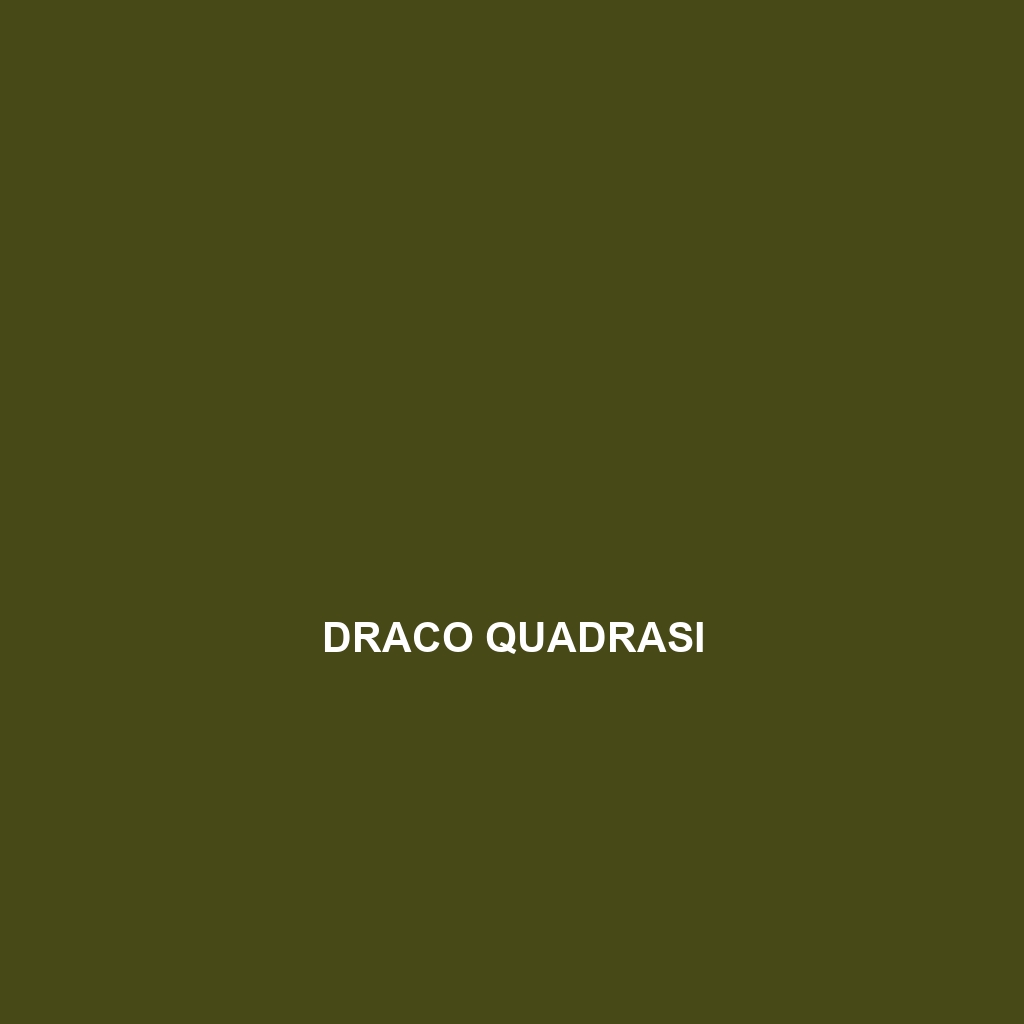Common Name
Draco punctatus
Scientific Name
Draco punctatus
Habitat
Draco punctatus primarily inhabits tropical rainforests and adjacent areas of Southeast Asia. This species is often found in regions with dense canopy cover, thriving in the humid environment that rainforests provide. They are commonly located in countries like Indonesia, Malaysia, and the Philippines, where temperatures remain consistently warm. Additionally, Draco punctatus has been observed in temperate forests, exhibiting adaptability to various climatic conditions. The presence of large trees and abundant vegetation is essential as these provide essential camouflage and perching sites, ensuring the dragon’s survival in both rainforest and savanna ecosystems.
Physical Characteristics
Draco punctatus exhibits distinctive physical traits that make it easily recognizable. Typically, adults can reach a length of about 15 to 30 centimeters (6 to 12 inches), depending on the individual and its environment. Their elongated bodies are characterized by a flattened, leaf-like shape which assists in camouflage among foliage. The coloration can vary, featuring combinations of green and brown hues, which mimic the dappled light of the forest floor. A unique feature of this species is its wing-like flaps of skin, known as patagia, which extend from the neck to the ribs and can be spread out to glide between trees. This adaptation allows Draco punctatus to travel distances of up to 10 meters (about 30 feet) in a single glide.
Behavior
Typically, Draco punctatus exhibits arboreal behavior, spending a majority of its life in trees. While these reptiles are diurnal, being most active during the daytime, they exhibit interesting social interactions with other members of their species. Mating rituals include elaborate displays and physical movements to attract partners, enhancing their visibility among each other. Additionally, they demonstrate remarkable gliding capabilities, which they utilize to maneuver through their forest habitats. This species is generally solitary but may show markers of social behavior during the mating season. They are not migratory but can change locations within their established territories based on availability of food and habitat conditions.
Diet
Draco punctatus is primarily an insectivore, feeding predominantly on ants, termites, and other small arthropods. Their diet is crucial for maintaining ecological balance in their habitats where they help control insect populations. These reptiles utilize their long, slender tongues to snap up prey quickly, demonstrating their predatory skills. Occasionally, they may also consume plant material, making them somewhat omnivorous, which further aids in their adaptability to different environments.
Reproduction
The reproductive cycle of Draco punctatus typically spans several months, with the mating season occurring during the warmer months when food is plentiful. Males engage in displays to attract females, showcasing their vibrant colors and gliding skills. After mating, the female lays a clutch of about 3 to 5 eggs, which she buries in moist soil near tree roots for protection from predators. The eggs have an incubation period of approximately 60 to 75 days. Once hatched, the young are independent and rely on their instincts to find food and shelter, as parental care is minimal.
Conservation Status
The conservation status of Draco punctatus is currently classified as being of “Least Concern” according to the IUCN Red List. While they are not currently deemed endangered, habitat destruction due to deforestation poses significant threats to their populations. Conservation efforts focus on protecting their natural habitats and promoting sustainable practices to mitigate environmental impacts. Nonetheless, ongoing environmental changes may elevate their conservation status in the future if protective measures are not implemented.
Interesting Facts
Draco punctatus possesses several fascinating traits that may intrigue enthusiasts. One unique adaptation is their ability to glide using their specialized flaps of skin, which allows them to escape predators and navigate through dense forests. Furthermore, their remarkable camouflage makes them difficult for both prey and predators to spot, enhancing their survival chances. These reptiles are also known for their distinctive throat flaps, which can be expanded to attract mates or intimidate rivals, showcasing their dynamic physical expression.
Role in Ecosystem
Draco punctatus plays a pivotal role in its ecosystem as both predator and prey. By controlling insect populations, they contribute to plant health and biodiversity within their habitats. Additionally, as prey for larger birds and mammals, they form an integral part of the food web. Their ability to glide between trees also facilitates seed dispersal, promoting plant growth and forest regeneration. These functions underscore the importance of Draco punctatus in maintaining ecological balance and illustrating the intricate connections within forest ecosystems.
This detailed species description format provides comprehensive insights into Draco punctatus, optimizing for SEO while ensuring a structured and informative read.
